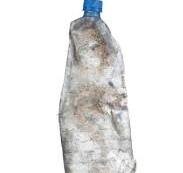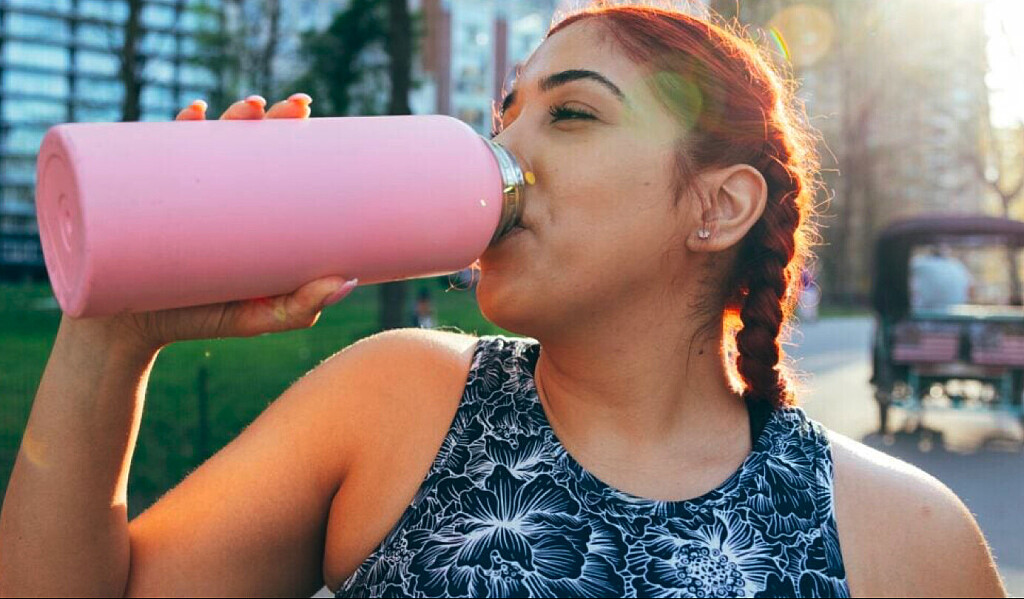Running News Daily
Running News Daily is edited by Bob Anderson. Send your news items to bob@mybestruns.com Advertising opportunities available. Train the Kenyan Way at KATA Kenya and Portugal owned and operated by Bob Anderson. Be sure to catch our movie A Long Run the movie KATA Running Camps and KATA Potato Farms - 31 now open in Kenya! https://kata.ke/
Index to Daily Posts · Sign Up For Updates · Run The World Feed
You Have No Idea How Gross Your Water Bottle Is. Here’s How to Clean It.
As an active person, staying hydrated is one of your top priorities. Cleaning your water bottle should be high up on your to-do list, too, but for many of us—let’s be honest—it’s not.
This makes for a humbling (and gross) reality check when you go for a drink, glance down at your mouthpiece, and are forced to reckon with a film of mystery gunk that has collected there since the last time you washed it.
Due to busy schedules, forgetfulness, and a lack of extra tumblers, water bottles get nasty quickly. Although we love the sustainable choice of reusing one, that commitment requires some care-taking to avoid illness and maintain good water-bottle hygiene.

Below, experts dig into the dirty details and share their tips for keeping your water bottle safe and sanitary, no matter how many sweaty hikes or shared sips it endures.
What Types of Bacteria Are Lurking in Your Reusable Water Bottle?
According to the Water Quality Association, a not-for-profit organization in the water treatment industry, all drinking water contains microbes or heterotrophic microorganisms, a catch-all term for types of bacteria, mold, or yeast.
A September 2024 survey that swabbed water bottles found that the most common bacteria in reusable bottles were associated with antibiotic-resistant, hospital-acquired infections like pneumonia and meningitis (which can be fatal), and food poisoning, which comes with symptoms like vomiting and diarrhea.
The survey also concluded that Americans’ reusable water bottles, on average, contain 20.8 million CFUs of bacteria—about 40,000 times more than you’d typically find on a household toilet seat.
Exactly what type of invaders your water bottle collects depends on if it has a screw top with nooks and crannies for germs to stow away in, whether or not you share your bottle with others, or if you use it for anything other than water, like coffee or sports
Sugary beverages, in particular, leave behind nutrients for bacteria to feed on and multiply.
Drinking from a Dirty Bottle Can Make You Sick
If you don’t clean your water bottle properly, all kinds of bacteria can start to grow. Ingesting water from an unclean bottle can result in gastrointestinal or respiratory issues, says Qinchun Rao, a professor of Food and Nutrition at Florida State University.
How to Tell When Your Water Bottle Is Dirty
Acceptable levels of heterotrophic organisms, also known as heterotrophic plate counts (HPC), vary by country. The Environmental Protection Agency’s HPC standard for any given drinking water sample is less than or equal to 500 colony-forming units per milliliter (CFU/mL).
When your water surpasses that threshold, and/or other bacteria strains are introduced to the mix—like when a water bottle goes uncleaned after a workout—water safety is called into question.
You won’t always be able to tell how dirty your water bottle is. That’s a big reason cleaning them falls by the wayside: they “look” clean.
According to the Cleveland Clinic, more noticeable signs of contamination are visible mold spots, an unpleasant smell, cloudy water, or an off-putting taste.
Instead of waiting for it to show signs of grime, just get into the practice of cleaning it daily at a minimum.
However, if you fall behind and skip a few days, remain on the lookout for a tell-tale layer of dark slime known as a biofilm. It’s something that you will likely have to remove your lid and peek inside to notice, especially if it’s only
How to Clean Your Water Bottle
“Treat your water bottle like a utensil,” says Mitzi Baum, the CEO of Stop Foodborne Illness. If it’s dishwasher safe, she strongly recommends running it through a wash cycle.
Below are some more expert tips for water bottle washing.
Clean Your Water Bottle After You Purchase It
When you’ve bought your ideal water bottle, don’t race to use it. Baum says it’s important to clean and sanitize it with hot water before your lips ever touch it—because who knows how dirty its journey to the store was.
Wash Your Water Bottle Daily, and Do a Good Job
Rao recommends washing the bottle with warm, soapy water, especially if you use it frequently or for beverages other than water. (Reader: just rinsing the bottle under some running water doesn’t qualify as cleaning it.)
Clean Your Reusable Straw with a Small, Long Brush
Flushing the narrow spout with water won’t cut it. This is especially the case if your straw is plastic because, as Wu notes about plastic water bottles, they are most easily scratched and, therefore, more likely to harbor bacteria.
Regardless of material, straws are small and compact, making them the perfect hiding
If You Have a Water Bladder, Give It a Similar Treatment
Your hiking water reservoir can be treated like a giant water bottle. Soak it in hot, soapy water or use a cleaning tab, like the Bottle Bright Cleaning Tablets, scrub the inside (including the narrow drinking hose, which will require a slim, straw-cleaning brush), drain it, and rinse it well before refilling for the next adventure. During the soak stage, make sure to also fill the hose with cleaning solution.
Narrow-Neck Bottles Require Attention to Detail
Professor Wu points out that bottles with narrow necks make thorough cleaning difficult. Cleaning one efficiently might take a slender bottle-cleaning brush or, more simply, a soft sponge that’s easy to manipulate around its curves without missing any spots.
Don’t Forget to Wash the Outside
“People often carry their water bottle throughout the day and rest it on various surfaces,” says Dr. Mieses Malchuk, a board-certified family physician in North Carolina, like, for example, in a sweaty duffel or on a musty tree trunk. For that reason, cleaning the outside of your bottle with the same soapy water method matters.
The easiest way to keep your water bottle clean
Login to leave a comment




